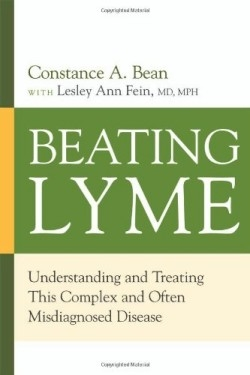Beating Lyme
Understanding and Treating This Complex and Often Misdiagnosed Disease
Currently the fastest-growing infectious disease in the US and increasing by a minimum of eight percent each year, (under-reporting makes it likely that ten times this number is more realistic), Lyme disease is transmitted to a human or animal victim by the bite of an infected deer tick no larger than a poppy seed. The tick lives in the landscape surrounding homes, schools, and playgrounds across the country, and its bite can cause a bacterial infection that invades multiple body systems with devastating results. First diagnosed in the US in Lyme, Connecticut, in 1975, the disease mimics symptoms of many other serious illnesses including Alzheimer’s, multiple sclerosis, amyotropic lateral sclerosis (Lou Gehrig’s Disease), Parkinson’s Disease, lupus, chronic fatigue syndrome, and fibromyalgia syndrome. Testing for Lyme is unreliable, making diagnosis difficult, and treatment is hindered by difficulties in obtaining insurance coverage and compounded by the political controversy among members of the medical establishment.
Author Constance A. Bean suggests that “If people died from Lyme, as occurs with AIDS, the Lyme epidemic would not likely remain out of public view.” If the illness manifested immediately after a tick bite, if symptoms were easily visible and consistent, if it were passed through contaminated food or water, or if it were contagious, it would be handled differently. Instead, the epidemic is largely going untreated and under-reported. The good news is that the correct treatment administered over a long enough time span can reverse even the most serious symptoms. The bad news is that sufferers are unlikely to find doctors who understand Lyme disease, and those who provide the long-term antibiotic treatments may be investigated and have their licenses to practice medicine revoked for doing so.
Bean has first-hand experience with the suffering caused by Lyme disease and the frustration caused by the near-impossibility of obtaining rapid diagnosis and correct treatment. A former coordinator of health education at MIT, she is also the author of six other health-related books. Dr. Leslie Ann Fein, who contributed to the book, is board certified in Internal Medicine, has taught at Columbia University and Mt. Sinai Hospital in New York and is a specialist in Lyme disease who has served on the National Health Legislation Task Force.
Public health workers, teachers, parents, and those who suspect that they may be afflicted with Lyme disease must read this valuable book and share it with their medical practitioner. If the doctor proves resistant to the information, readers may be able to avail themselves of other resources provided by the authors to obtain the care that will bring them relief.
Reviewed by
Kristine Morris
Disclosure: This article is not an endorsement, but a review. The publisher of this book provided free copies of the book to have their book reviewed by a professional reviewer. No fee was paid by the publisher for this review. Foreword Reviews only recommends books that we love. Foreword Magazine, Inc. is disclosing this in accordance with the Federal Trade Commission’s 16 CFR, Part 255.

